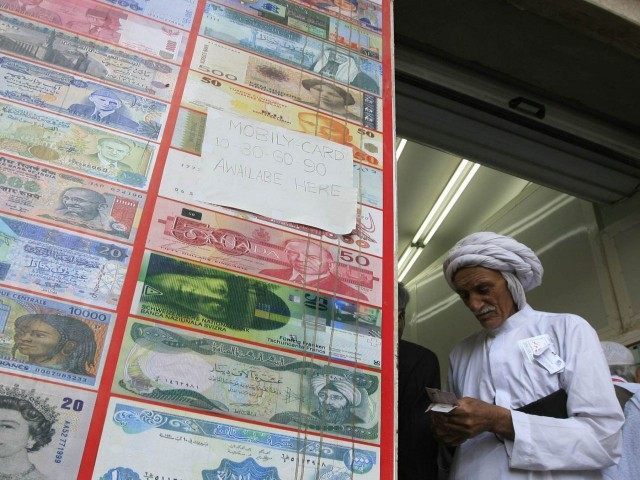The IMF just confirmed Breitbart News’ October 5 warning that Saudi Arabia’s cash reserves are in free-fall, with a new estimate that the world’s richest kingdom may be bankrupt by 2020.
Each October, the International Monetary Exchange issues its World Economic and Financial Regional Surveys. For the first time since the 1960s, the region set to suffer the worst financial agony over the next five years is the Middle East. Ground Zero for that pain is Saudi Arabia.
The reason for Saudi Arabia’s reluctance to balance its budget is that the 15,000 members of the six branches of the Saudi royal family buy national support through massive social welfare spending that requires a crude oil price of $103 a barrel to balance their budget.
The vast majority of the 30 million residents enjoy their standard of living due to government handouts. Saudi citizens tend to lack employable skills and are culturally not inclined to work. Of the 5.5 million that do have jobs, 3 million work directly for the government. The small private sector tends only to employ foreigners.
Although other Middle East nations are engaged in “active consolidation measures,” such as lower investment, hiring freezes, or energy price reform, Saudi Arabia’s government stated that they will make no austerity “tax increases and spending cuts.”
The IMF points out that “Large fiscal spending packages were announced in January and April,” as new King Salman Bin Abdulaziz Al Saud distributed $32 billion to the people to celebrate his coronation. As a result, the IMF predicts the kingdom will suffer a negative 21.6 percent “General Government Overall Fiscal Balance” in 2015 and a 19.4 percent negative balance in 2016.
Breitbart News in August predicted that the kingdom’s foreign exchange position would fall by $130 billion, from a peak of $750 billion in August 2014 to $620 billion by the end of 2015. But we were actually was too optimistic regarding the cash burn rate, with the kingdom’s central bank reporting net foreign assets fell in August “for a seventh month in a row to $662.3 billion, the lowest since February 2013.” With post-summer U.S. and E.U. seasonal oil demand falling, Saudi FX could be down over $150 billion this year.
While OPEC has argued that oil prices should recover to $80 a barrel by 2020, the IMF predicts an average of $60 per barrel, because the “the oil price drop is likely to be large and persistent.” But Goldman Sachs predicts crude oil prices will remain low for fifteen years because “Libya and Iran will add significant amounts of oil to the market of up to 2 mb/d, in the next couple of years, and Iraq (including Kurdistan) could meet as much as one-third of global demand growth for years to come,” according to Forbes.
Even more ominous for Saudi Arabia, the U.S. Energy Information Agency just reported that “Weekly Ending Stocks of U.S. Crude Oil and Petroleum Products” hit a 25-year high of 2.003 billion barrels, up 183 million barrels from the same week a year ago. That record rise came despite a 46 percent plunge in crude oil prices over the same period.
The wild card in trying to predict how long Saudi Arabia can remain solvent is the nation’s surging military commitments. The kingdom passed Russia in 2015 to take over the world’s third spot in military spending, with a defense budget of $80.8 billion, behind only the U.S. and China, according to IISS. But that was before invading Yemen and dramatically increasing Saudi secret funding of Islamist groups in Syria.

COMMENTS
Please let us know if you're having issues with commenting.